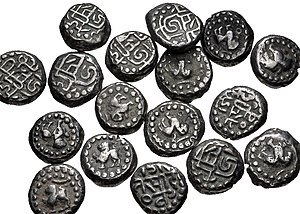Chahamanas of Ranastambhapura | |||||||||
|---|---|---|---|---|---|---|---|---|---|
| 1192 CE–1301 CE | |||||||||
| Capital | Ranastambhapura | ||||||||
| Government | Absolute monarchy | ||||||||
| History | |||||||||
• Established | 1192 CE | ||||||||
• Disestablished | 1301 CE | ||||||||
| |||||||||
| Today part of | India | ||||||||

The Chahamanas of Ranastambhapura were a 13th-century Indian dynasty. They ruled the area around their capital Ranastambhapura (Ranthambore) in present-day Rajasthan, initially as vassals of the Delhi Sultanate, and later gained independence. They belonged to the Chahamana (Chauhan) clan of the Rajputs, and are also known as Chauhans of Ranthambore in vernacular Rajasthani bardic literature.
The Chahamana line of Ranastambhapura was established by Govindaraja, who agreed to rule as a vassal of the Ghurids in 1192, after they defeated his father, the Shakambhari Chahamana king Prithviraja III. Govindaraja's descendants gained and lost their independence to the Delhi Sultanate multiple times during the 13th century. Hammira, the last king of the dynasty, adopted an expansionist policy, and raided several neighbouring kingdoms. The dynasty ended with his defeat against the Delhi Sultan Alauddin Khalji at the Siege of Ranthambore in 1301.

